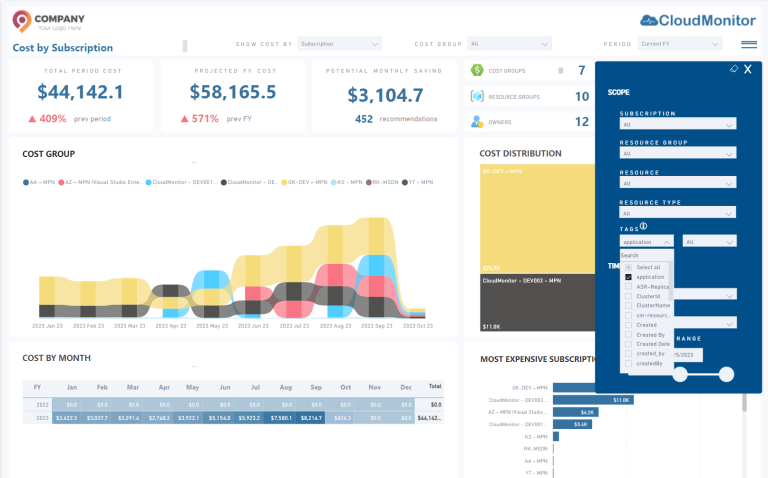Managing Shared Costs Capability
Everyone taking ownership of their cloud usage is a foundation Principle of FinOps. Cost Groups are a logical grouping of cloud resources that are used to allocate costs and track spending.
Without managing shared costs, organizations may face inaccurate or incomplete cost reporting, misaligned incentives, or overspending on underutilized resources. Some examples of shared resources are virtual networks, load balancers, encryption keys, or monitoring tools.
CloudMonitor features related to Managing Shared Costs

Admin App
A Cost Group is a concept unique to CloudMonitor and can be created with the Admin App. By grouping resources based on business function, department, or other criteria, you can increase accountability and transparency within your organization.
Cost by any Metric
Once you’ve created cost groups you can utilize the Cost by X feature of CloudMonitor to analyze your costs across the different Cost Groups you created, you can identify the Cost Groups where cost savings can be achieved and make data-driven decisions about your cloud spend.


Filter Cost Data by Any Tags to Allocate Cost
Allows you to allocate costs based on tags, offering a flexible way to manage shared expenses. This granular tagging approach increases financial transparency and facilitates more precise budget planning for various organizational units.
View Spending Data on Shared Capacity
Allows you to view the cost details of pre-purchased capacity in different time granularity, which are mapped to business units, subscriptions and resource levels.

Managing Shared Cost Definition
Managing shared costs is a key capability of the FinOps Framework, which helps organizations optimize their cloud spending and value. By allocating the cost of shared resources, such as network bandwidth, security services, or databases, to the teams and applications that consume them, organizations can gain visibility into the true cost of each cloud service and identify opportunities for cost savings or efficiency improvements. Without managing shared costs, organizations may face inaccurate or incomplete cost reporting, misaligned incentives, or overspending on underutilized resources.
One of the challenges of managing shared costs is to define and implement a consistent and accurate way of attributing the cost of shared resources to the consumers. This requires a clear understanding of the usage patterns and dependencies of each cloud service, as well as the business value and objectives of each team and application. Some common methods for attributing shared costs are proportional allocation, fixed allocation, or usage-based allocation.
Another challenge of managing shared costs is to communicate and report the cost information to the relevant stakeholders in a timely and actionable manner. This requires a transparent and collaborative process that involves all the parties involved in the cloud lifecycle, from planning to operation to optimization. Some common tools for communicating and reporting shared costs are dashboards, alerts, or reports.
